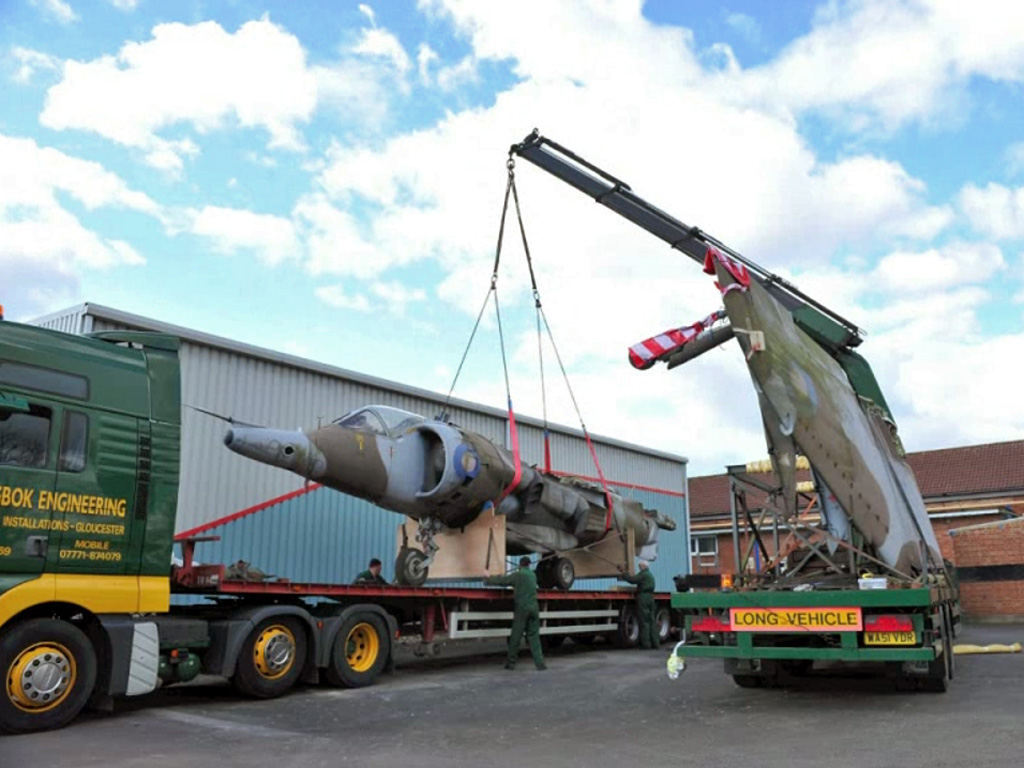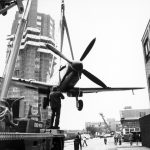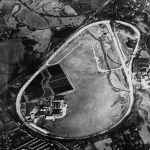
(photo credit: Tangmere Military Aviation Museum)
The 1969 Daily Mail Trans-Atlantic Air Race was a race between London and New York to commemorate the 50th Anniversary of the first non-stop trans-Atlantic crossing by plane achieved in 1919 by Alcock and Brown, also in pursuit of a prize sponsored by the Daily Mail. While it was billed as an air race, it was in actuality a timed race for an individual to travel between two points, the tallest building in London, the Post Office Tower (now the BT Tower) and the tallest building in New York, the Empire State Building. Participants travelled within the inner cities by motorcycle to ensure the quickest transit times to and from the specified start/finish points and their aircraft, and one suspects the choice of destination points were chosen maximize the drama for media coverage.
The Hawker Harrier had just entered operational service with the RAF and the British government and Hawker were keen to capture the attention of the US Senate Armed Services Committee, hoping they could sell the capabilities of the revolutionary jump jet for use by the US Marine Corps. Participants could enter for either the New York to London Route or the London to New York Route. The two Harriers entered in the race took full advantage of their ability to take off and land vertically, making their jump off points close to the start/finish lines, using a disused pier on the East River in New York and a coal yard at Saint Pancras Station in London. The Post Office Tower to Empire State Building time achieved by by Squadron Leader Tom Lecky-Thompson in the Harrier was 6 hours, 11 minutes. Both Harriers carried modifications for their runs, sporting 18 inch ferry wingtip extensions and 100 gallon drop tanks to extend their range capabilities.
The Royal Navy fielded McDonnell Douglas Phantom FG1s for their entries and won for the shortest time eastbound, taking off from Floyd Bennett Field in Brooklyn, New York and landing at Wisley Airfield, reportedly overusing its afterburner to achieve a point to point transit time of 5 hours and 11 minutes.
XV744 served in the RAF until 1992 and was sent to the Royal Military College of Science in Shrivenham. The Chairman of the Trustees of TMAM spotted the plane in 2011, now rough from sitting neglected in the elements for nearly two decades and immediately recognized its historical significance. The transfer of the plane was negotiated between the the college and the museum and the plane has just arrived at Tangmere, where it will be restored to display standard and will be exhibited to the public one again wearing the original paint scheme and markings of the RAF 1st Squadron which she wore when she made history.























